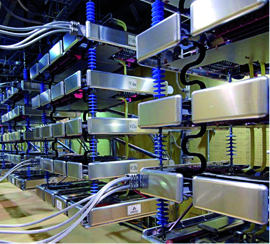Engineering Design and Site Supervision Services for HVDC Project of Semnan - Phase3: Engineering Design for Construction of Semnan and Golpayegan HVDC Convertors

Title: Engineering Design and Site Supervision Services for HVDC Project of Semnan - Phase3: Engineering Design for Construction of Semnan and Golpayegan HVDC Convertors
Start Date: 2012
End Date: 2013
Client: Semnan Regional Electric Company
Location: Semnan and Golpayegan Cities
Scope Of Work:
- Performing design and supplementary Studies
- Preparing of technical specifications of equipments and systems and designing executive drawings (Based on phase 1 outcome)
- Preparation of tender Docs (in two commercial and technical volumes) for Semnan and Golpayegan HVAC convertors
- Cooperation in floating tender stage
- Performing Contract Negotiation
- Design review of EPC contractor prepared documents
Details:
Electrical power is generated as an alternating current (AC). It is also transmitted, distributed and consumed as AC.
In some cases, however, it has economically and technically advantages to use direct current (DC) links in the electrical systems. In particular situations, it may be the sole feasiblemethod of power transmission. When two AC systems are hard to be synchronized or when the distancethrough overhead lineor cable is too long to reach stable AC transmission, DC transmission is used. DC Transmission is the only option for large power systems with possibility of rapid spread of disturbances. In a converter station, the AC is converted to DC then transmitted through the HVDC lines and inremote converterstation, converted back to AC.
HVDC transmission applications classified into four broad categories:
Transmission of bulk power where AC would be uneconomical, impracticable or subject to environmental restrictions
Interconnection between systems which operate at different frequencies, or between nonsynchronized or isolated systems which, although they have the same nominal frequency, cannot be operated reliably in synchronism
Injection of power without significantly increasing the short circuit level of the receiving AC system
